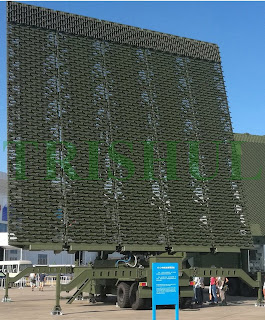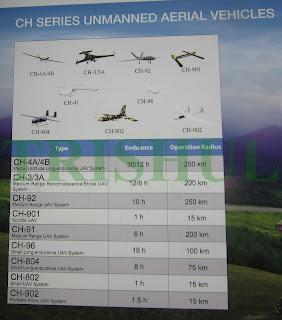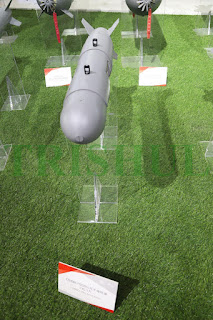The
PLAAF presently has a weird three-stage flying training syllabus for its
trainee pilots: use the Nanchang PT-6 piston-engined aircraft for the ab initio
stage, followed by the Hongdu JL-8/K-8 primary turbofan-powered trainer for
intermediate-level flying training, and culminating in lead-in fighter training
with the Hongdu L-15. It now looks the PLAAF has at last decided to get rid of
this obsolete practice by procuring basic turboprop trainers (BTT) and
eventually decommissioning its PT-6s and JL-8s. To this end, the PLAAF is
likely to procure the CETC Wuhu Diamond Aircraft Manufacture Co Ltd-produced
TA-20 BTT, which in essence is a licence-built DART-450
(Diamond Aircraft Reconnaissance Trainer) that was developed by Austria-based
Diamond Aircraft Industries.
The
TA-20 is the world’s first all-carbon fibre, tandem twin-seat civil and military
BTT and is powered by a single AI-450SD turboprop engine produced by Ukraine-based
Ivchenko Progress/Motor Sich. The engine drives a five-bladed MT propeller and
offers a maximum takeoff power of 495hp. The TA-20;s maiden flight took place
on November 6, 2018 at Wuhu in Jiangsu province.
CETC Wuhu Diamond
Aircraft Manufacture Co Ltd. was founded in 2013 and it presently builds the Diamond Pattern DA-42 and DV-20 under license. Its
TA-20 BTT is equipped with the Smart-210 avionics system from Hermes-sys (Chengdu Hermes Technology Ltd). The Smart-210 suite complies with all international airworthiness standards.
Wu
Jian Qi, the CETC Group’s Chief Engineer, confirmed at a recent presentation
that a metric-wave radar detected and traced the route of a USAF F-22 Raptor at
a distance of 450km in 2013, whereas none of the other PLAAF radars saw it. Presently
a series of radar clusters each comprising a JY-26 UHF-band and SLC-7 L-band active phased-array radar, JY-27A
Skywatch-5 VHF-band radar, and a YLC-8B
UHF-band 3-D radar, are deployed throughout
coastal China.
First Type 055 DDG of the PLA Navy Undergoing Sea Trials
Pakistan Navy’s CSTC-Developed Type 054AP F-22P
Batch-2 FFG Design
The Pakistan Navy (PN) had
on June 1, 2018 inked a contract with the state-owned China Shipbuilding
Trading Company Ltd (CSTC) for procuring two
additional 4,000-tonne guided-missile frigates (FFG) to add to the first two it
had ordered exactly a year ago. All four FFGs will be delivered by mid-2021. Designed by the China International Shipbuilding Corp
(CISC) Group’s 701 Institute, the FFGs will be
built by the Shanghai-based Hudong Zhonghua Shipbuilding Co.
The 4,000-tonne
FFG’s design is derived from that of the PLA Navy’s Type 054A FFG. It will have
an endurance of 21 days, length of 135 metres, range of 4,000 nautical miles
(when cruising at 18 Knots) and top speed of 26 Knots.
It will have 32
vertical-launch system (VLS) cells containing the LY-80N surface-to-air missiles
(SAM), one 76mm HPJ-26 main naval gun,
two 30mm HPJ-17 30mm Type 1130 close-in guns, a 24-cell FL-3000N point-defence
missile system (PDMS), twin ET-52C triple-tube torpedo launchers, one mast-mounted SR-2410C S-band
active phased-array radar developed by the China Educational Instrument &
Equipment Corp (CEIEC), twin six-barrel
Type-87 240mm anti-submarine rocket launchers (with 36 rockets), twin Type
726-4 18-tube decoy rocket launchers, and eight inclined launchers housing the
Harba anti-ship cruise missile variant of the Babur land-attack cruise missile
(which itself is a China-developed clone of the Ukraine-developed Korshun
cruise missile). All four FFGs will be optimised for anti-submarine fleet control
missions. Each FFG will be powered by four SEMT Pielstick 16 PA6 STC
diesel engines.
The SR-2410C radar can track up to 150
targets per rotation. Limitations include airborne targets cruising at speeds above Mach 3 and at ranges
of more than 150km. The radar has a fire-control capability to track anti-ship
cruise missiles, but only at a maximum range of 60km. It is also capable of
tracking moving ground vehicles and surface ships. This radar has already been
installed on the Bangladesh Navy’s first two Type 056 guided-missile corvettes—BNS Shongram and BNS Prottasha.
In another development,
on April 23, 2018 the keel-laying ceremony of the first of two offshore patrol
vessels (OPV-1900) being built for the PN was held at DAMEN Shipyard Galati in
Romania. Pakistan
and The Netherlands-based Damen had signed a contract for the construction of
the two OPVs in June 2017. Each of the OPVs will have a displacement of around
1,900 tonnes, an overall length of 90 metres, 14.4-metre beamwidth, 50-man crew
complement and 23 Knots speed. The vessels will be suited for anti-surface and
anti-air operations, maritime security operations, day/night helicopter
operations, combat search-and-rescue, surveillance, and intelligence-gathering.
Earlier, on March 10, 2018 the Pakistan Customs took delivery of two Damen Stan Patrol-1605 FRP patrol boats at Karachi
Shipyard & Engineering Works Ltd (KS & EW). Both
vessels were built by KS & EW with technical and material support from
Damen. The entire project took just eight months to reach fruition. The patrol
boats shall be used for monitoring and enforcement activities in Pakistan’s
territorial waters. KS & EW had received the order for the two vessels from
the Pakistan Customs in July last year. The bid was supported by Damen's Technical Cooperation Programme (DTC), which
cooperates with shipyards worldwide. Damen supplied prefabricated material kits
along with the hulls to KS & EW. Knowledge transfer was also an integral
part of the DTC programme, and for this project KS & EW production staff
went to Damen Antalya for training on working with FRP materials
by Damen’s trainers. Technicians from Damen Antalya also travelled to Karachi
to transfer knowledge during the production and testing phases. KS & EW and
Damen have a long history of working together. This has to date resulted in the
delivery of four Damen Stan Tug-1605s for the PN and two more of the same type
to the Karachi Port Trust, plus a Damen Multi-Cat-1908, for the Karachi Port Trust.
AVIC-Developed Z-20 Medium-Lift Utility Helicopter
NORINCO-Developed ZTQ-105 Light Tank Meant For Deployment In TAR





































































































































































































































































































